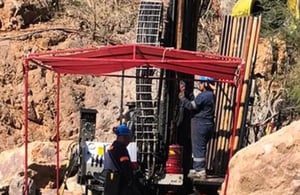Urban Logistics REIT PLC (LON:SHED) is the topic of conversation when Hardman and Co’s Analyst Mike Foster caught up with DirectorsTalk for an exclusive interview.
Q1: Urban Logistics REIT, can you tell us what it is?
A1: It’s an investment company focussing on urban warehouses and it’s got a small amount of associated offices and light manufacturing.
The driver, literally, is the last mile delivery and it’s therefore typically smaller and medium sized assets, around 50 to 80,000 square feet, so these are not the big boxes that you see along motorway intersections, it’s the last mile of delivery.
Quite important is that these are single let properties, making them more financially efficient and the creditworthiness shows high-quality tenants and the market’s in strategic under-supply.
Q2: Did anything stand out in their results which were announced 24th May?
A2: The net asset value (NAV) went up again by 11% and good dividends were paid and the yield on the stock is well over 5%, the dividend yield and those dividends rose 11% too. They’ve achieved returns well towards the top end of the UK property sector for a few years now.
Q3: What sort of returns are they achieving?
A3: Investors look at something called Total Asset Return which is that rise in NAV plus the dividends and for that year to March 2019, it was 17.7%, the year before it was 10.9% and before that it was 19.1%.
It’s worth saying those numbers slowly as they were really strong so that’s 17.7% last year, 10.9% the year before and 19.1% before that. They are only in part driven by the clear fact that the market is in strategic under-supply.
Q4: Do you think that’s sustainable?
A4: Yes, it’s a large undersupply. The assets are valued on average at a capital value of around £80 per square foot and that’s well below the approximate £120 or more of the new-build cost of these small/medium sized warehouses and that’s even before factoring in any land value at all.
So, it would take a fair bit of further asset value rises to stimulate much new development and these are at sites in the urban environment so it’s difficult to find even considering new development.
Q5: What would happen if prices of these assets rose so far that new development was stimulated?
A5: The NAV of the company would be significantly higher, because the assets price would’ve risen under that scenario, and indeed from there on they might grow more slowly apart from some of the management’s extra value adding and that’s really crucial.
The management has clearly created valuable rises, management, for example, took profit last year on the Bedford asset, they’d held it for 37 months and they made a 74% total return and the buyer paid what we consider to be a market price.
What Urban Logistics did was get a new tenant in at £6.52 per square foot on Unit A and one at £6.26 per square foot on Unit B. The value was created by the purchase cost plus the selection of the appropriate tenant because on acquisition, it was £4.24 average rent and remember they got it up to £6.26. The acquisition price was set on that lower rent basis and they’ve done that sort of thing a few times.
Q6: Surely, as with all of these things, there must be risks?
A6: Yes, market rents have risen in the market generally to about 25% above Urban Logistics REIT’s current average £4.83 per square foot level.
Okay, if the UK economy saw prolonged weakness, the market in new rentals would soften, there’s a big gap there on the upside at the moment. There are those two major benefits of new-build costs being so much higher than the current value of these assets and of the internet shopping delivery fulfilment growth and the tenant roster is strong.
Q7: Isn’t it the case that rents in this sector have gone nowhere for 20 years and maybe at the moment there’s just a one-off shift to on-line retailers needing these ‘last mile’ warehouses?
A7: That is very true that rents generally have gone up a bit, down a bit, they’re on a rise at the moment but they’ve gone sideways for the last 20 years, indeed. So, the rents are rising at the moment but it’s important to look at only a modest part of the growth in demand is internet shopping, there are lots of other drivers to demand growth.
Our full research report that Hardman wrote after the results goes into this but we conclude that internet shopping is useful, but there is that wide range of drivers and the story has a good dividend yield and it’s got a clear path to growth ahead of it.








































